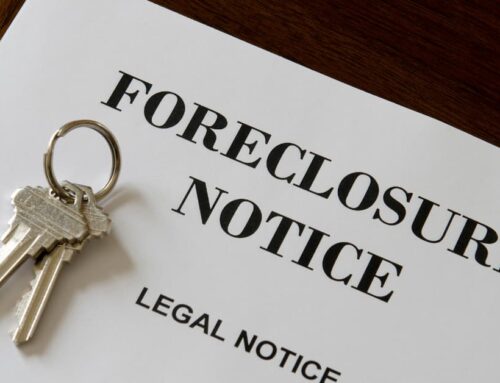Real Estate Joint Venture Agreements are legally binding contracts that allow multiple investors to pool their resources, expertise, and capital to pursue larger real estate opportunities. These partnerships enable investors to leverage combined strengths while sharing both risks and rewards of property investments. The difference between profitable partnerships and costly legal disasters comes down to having a comprehensive, properly structured agreement that protects all parties.
Three years ago, I watched a promising real estate deal in East Austin fall apart spectacularly. Two experienced investors, both with solid track records, decided to partner on a $2.3 million mixed-use development. They had the capital, the vision, and the market timing. What they didn’t have was a properly structured joint venture agreement.
The partnership dissolved within eight months. Legal fees exceeded $180,000. The property sat vacant for two years. Both investors lost not just money, but relationships and reputations they’d spent decades building.
That disaster could have been prevented with a single document – a comprehensive real estate joint venture agreement that clearly defined roles, responsibilities, and exit strategies from day one.
This is exactly why working with experienced joint venture attorneys who understand the complexities of partnership structures is crucial for protecting your investment and ensuring your deal’s success.
Key Insights:
- Most joint ventures fail due to inadequate documentation, not bad deals
- Proper legal structure costs $3,000-$15,000 but protects million-dollar investments
- Texas partnerships must comply with state laws and federal securities regulations
- Exit strategies and dispute resolution prevent costly litigation
- Partner due diligence matters more than current financial capacity
- Clear profit-sharing and management roles prevent partnership conflicts
Why Most Real Estate Joint Ventures Fail (And How to Avoid the Mistakes)
Here’s what I’ve learned after helping hundreds of Texas real estate investors structure their partnerships: most joint venture agreements fail not because of bad deals, but because of bad documentation.
The common assumption is that handshake deals work fine between trusted partners. In my experience representing clients across Travis, Williamson, and Hays counties, this mindset has cost investors millions in preventable disputes.
A real estate joint venture agreement isn’t just paperwork – it’s your partnership’s insurance policy. It protects your investment, defines decision-making authority, and provides a clear roadmap when things don’t go according to plan.
Understanding Real Estate Joint Venture Agreements
A real estate joint venture agreement is a legally binding contract between two or more parties who agree to pool resources, expertise, or capital for a specific real estate project. Unlike general partnerships, joint ventures are typically project-specific and have defined timelines.
The structure allows investors to combine strengths while sharing both risks and rewards. One partner might bring capital while another contributes market knowledge, construction expertise, or property management experience.
In Texas, these agreements must comply with state partnership laws and real estate regulations. The Texas Business Organizations Code provides the framework, but the specific terms of your agreement determine how smoothly your partnership operates.
Key components every effective joint venture agreement must include:
- Contribution specifications – Exactly what each party brings to the partnership
- Profit and loss distribution – How returns and expenses are allocated
- Management structure – Who makes what decisions and when
- Exit provisions – Clear paths for ending the partnership
- Dispute resolution – Predetermined methods for handling conflicts
I’ve seen too many partnerships assume these details will work themselves out naturally. They don’t. Clear documentation prevents costly misunderstandings later.
Essential Elements of a Strong Joint Venture Agreement
Let me walk you through the critical sections that separate successful joint ventures from those that end up in litigation.
Capital Contributions and Funding Structure
Your agreement must specify exactly what each party contributes and when. This includes initial capital, ongoing funding obligations, and what happens if additional investment becomes necessary.
I recently worked with clients who structured a $4.2 million apartment acquisition where Partner A provided 70% of the down payment while Partner B contributed renovation expertise and project management. The agreement clearly outlined that future capital calls would maintain the same 70/30 ratio, preventing disputes when unexpected repairs arose six months later.
Management Rights and Decision-Making Authority
This section often determines whether your partnership thrives or dissolves. You need clear protocols for day-to-day operations, major decisions, and deadlock situations.
Consider establishing different approval thresholds: routine maintenance decisions might require simple majority approval, while major capital expenditures or sale decisions need unanimous consent. Define what constitutes “major” – typically expenditures exceeding a specific dollar amount or percentage of project value.
Profit Distribution and Loss Allocation
Many investors assume profits should mirror capital contributions, but successful joint ventures often use more nuanced approaches. Some partnerships allocate preferred returns to cash contributors while giving sweat equity partners larger percentages of appreciation.
Your agreement should address: initial return hurdles, waterfall structures for excess profits, and how losses affect future distributions. Tax considerations play a crucial role here – work with qualified CPAs to optimize your structure.
Buy-Sell Provisions and Exit Strategies
This might be the most important section you hope to never use. Life changes, business priorities shift, and partners sometimes need to exit projects early.
Effective buy-sell provisions include: trigger events that allow forced sales, valuation methodologies, payment terms, and rights of first refusal. I recommend including both voluntary exit mechanisms and involuntary removal procedures for partners who breach their obligations.
Dispute Resolution Mechanisms
Even the best partnerships encounter disagreements. Your agreement should establish a clear escalation process: direct negotiation, mediation, and if necessary, arbitration or litigation.
Consider requiring mediation before any court proceedings. In my experience, skilled mediators resolve 80% of real estate partnership disputes without expensive litigation. Include provisions for attorney fee allocation – typically, the prevailing party recovers legal costs.
Common Pitfalls That Destroy Real Estate Partnerships
After representing both sides of partnership disputes for over 15 years, certain patterns have emerged repeatedly. These issues are entirely preventable with proper planning.
Undefined Sweat Equity Contributions
One partner promises to “handle all the construction management” while the other provides capital. Six months later, disagreements arise about work quality, timeline delays, or additional costs. The agreement didn’t specify performance standards, completion deadlines, or consequences for subpar work.
Solution: Quantify sweat equity contributions with specific deliverables, timelines, and quality standards. Include replacement cost provisions if the contributing partner is unable to fulfill their obligations.
Inadequate Capital Call Provisions
Projects often require additional funding beyond initial projections. Without clear capital call procedures, partnerships face immediate crises when extra money is needed.
I’ve seen partnerships dissolve because one partner couldn’t contribute their share of unexpected expenses, while the other partner refused to cover the shortfall without receiving additional equity.
Solution: Establish capital call procedures, default consequences, and dilution formulas. Consider requiring capital reserves or standby financing commitments.
Vague Exit Valuation Methods
“Fair market value” sounds reasonable until partners disagree about what constitutes fair or how market value should be determined. I’ve handled cases where appraisal differences exceeded $500,000 on the same property.
Solution: Specify valuation methods in advance. Options include: professional appraisals with averaging formulas, predetermined formulas based on financial metrics, or structured auction processes between partners.
Structuring Your Joint Venture for Texas Real Estate Success
Texas real estate markets present unique opportunities and challenges that should influence your joint venture structure. Austin’s rapid growth, Houston’s energy sector dynamics, and Dallas’s corporate relocations create different risk profiles requiring tailored approaches.
Entity Selection Considerations
Most Texas real estate joint ventures operate through limited liability companies (LLCs) rather than general partnerships. LLCs provide liability protection, tax flexibility, and operational advantages for real estate investments.
Consider forming a new LLC for each project rather than using existing entities. This approach limits liability exposure and simplifies accounting, especially for investors with multiple projects.
Your operating agreement serves as the joint venture agreement, governing all aspects of the partnership. Texas LLC law provides significant flexibility in structuring management, voting, and distribution provisions.
Tax Planning Integration
Effective joint venture agreements coordinate with tax optimization strategies. Different contribution types, timing of distributions, and depreciation allocations can significantly impact each partner’s tax liability.
Work with experienced real estate CPAs to model various scenarios before finalizing your agreement structure. Consider how changes in tax law might affect your partnership over its expected lifespan.
Regulatory Compliance Requirements
Texas real estate transactions involve multiple regulatory layers: state licensing requirements, local zoning and permitting processes, and federal securities laws if you’re raising capital from passive investors.
Your joint venture agreement should address compliance responsibilities and allocate costs for legal, accounting, and regulatory requirements. Include provisions for handling violations or disputes with regulatory authorities.
Negotiating Terms That Protect Your Investment
The negotiation process reveals how well partners will work together throughout the project lifecycle. Pay attention to flexibility, problem-solving approaches, and willingness to address difficult scenarios.
Leverage Points and Trade-offs
Successful negotiations focus on creating mutual value rather than extracting maximum advantage. The partner providing capital might accept lower initial returns in exchange for stronger protective provisions. The partner contributing expertise might negotiate performance bonuses tied to project milestones.
Consider non-monetary terms that provide significant value: exclusive rights to future projects, referral arrangements, or preferred status for additional opportunities.
Protective Provisions for Different Partner Types
Capital providers typically want veto rights over major decisions, regular financial reporting, and priority distributions until achieving target returns. Operating partners often negotiate management fees, performance incentives, and protection against removal without cause.
Structure provisions that align incentives rather than creating adversarial relationships. Both partners should benefit from project success and share consequences of poor performance.
Future Project Considerations
Many successful partnerships develop ongoing relationships beyond single projects. Your initial agreement might include rights of first refusal on future opportunities, preferred partnership terms, or non-compete provisions.
Consider how current partnership terms might affect future deal structures. Avoid provisions that could limit valuable business relationships or market opportunities.
When to Walk Away From a Joint Venture Deal
Sometimes the best joint venture agreement is the one you don’t sign. Certain red flags indicate partnerships likely to fail regardless of documentation quality.
Partner Due Diligence Warning Signs
Financial instability, regardless of current project funding, creates ongoing partnership risks. Partners facing personal financial stress often make poor decisions or become unable to fulfill future obligations.
Misaligned expectations about timeline, returns, or work requirements suggest fundamental incompatibility. These issues rarely resolve through better documentation – they typically worsen under project pressure.
Previous partnership disputes or litigation history deserve careful investigation. While past conflicts don’t automatically disqualify potential partners, patterns of contentious relationships raise significant concerns.
Deal Structure Problems
Overly complex structures often mask fundamental flaws in project economics or partner compatibility. Successful joint ventures typically use straightforward structures with clear allocation formulas.
Inadequate capital reserves or unrealistic return projections create pressure that destroys partnerships when reality doesn’t match projections.
Market Timing and Location Risks
Even strong partnerships struggle with poorly timed or poorly located projects. Joint ventures can’t overcome fundamental market weaknesses – they often amplify losses when deals go wrong.
Consider whether partnership complexity adds value or simply spreads risk. Some projects work better with single ownership structures, even if that means smaller scale or slower execution.
Your Next Steps for Partnership Success
Creating an effective real estate joint venture agreement requires balancing legal protection with operational flexibility. The investment in proper documentation pays dividends throughout your project lifecycle and protects relationships that extend beyond single transactions.
Start by clearly defining what you bring to potential partnerships and what you need from partners. Identify your non-negotiable terms before entering negotiations. Work with experienced real estate attorneys who understand both legal requirements and practical business considerations.
Remember that the best joint venture agreements anticipate problems while hoping they never occur. Plan for success, but prepare for challenges. Your partnership’s strength depends not just on shared vision, but on how well you handle inevitable obstacles together.
Ready to structure your next real estate partnership for long-term success? Don’t let inadequate documentation put your investment and relationships at risk. Contact Kelly Legal Group today to discuss how we can help you create joint venture agreements that protect your interests while building profitable partnerships across Texas.
The cost of a proper legal structure pales compared to the expense of partnership disputes. Let’s make sure your next joint venture agreement sets you up for success from day one.
Frequently Asked Questions About Real Estate Joint Ventures
What are joint ventures?
Joint ventures are business arrangements where two or more parties agree to pool their resources, expertise, and capital for a specific project or business objective while maintaining their separate legal identities. In real estate, joint ventures allow investors to combine strengths such as financing, market knowledge, or operational expertise to pursue opportunities that might be too large or complex for individual investment. These partnerships are typically governed by written agreements that define each party’s contributions, responsibilities, profit-sharing arrangements, and exit strategies.
How does a joint venture work in real estate?
A joint venture in real estate works by allowing multiple investors to pool their resources, expertise, and capital to acquire, develop, or manage properties together. Partners contribute different assets such as cash, credit, construction knowledge, or property management skills, then share profits and losses according to their agreement. The partnership operates under a joint venture agreement that defines each partner’s responsibilities, decision-making authority, and exit strategies.
What is the 40 rule for joint ventures?
The 40 rule for joint ventures refers to the tax regulation that limits passive activity losses to $25,000 for individuals with adjusted gross income under $100,000, with a complete phase-out at $150,000. This rule affects how real estate joint venture partners can deduct losses against other income sources. Investors should consult tax professionals to understand how this limitation impacts their specific joint venture structure.
Are joint ventures always 50/50?
Joint ventures are not always 50/50 and can be structured with any profit-sharing ratio that partners agree upon. Common arrangements include 70/30, 60/40, or even more complex waterfall structures based on different contribution types and return hurdles. The key is documenting the agreed-upon split clearly in your joint venture agreement to prevent future disputes.
What is the 3 in 2 rule for joint ventures?
The 3 in 2 rule for joint ventures is a tax provision requiring partnerships to allocate items in a manner that reflects the economic arrangement between partners over a reasonable period. Specifically, allocations that don’t have substantial economic effect must meet certain tests, including the requirement that allocations be respected for at least three years or two-thirds of the partnership’s life. This rule ensures that tax allocations match the actual economic benefits and burdens shared by joint venture partners.
What are the 4 types of joint ventures?
The 4 types of joint ventures in real estate are: contractual joint ventures (partnership agreements without forming separate entities), limited liability company joint ventures (most common for real estate), limited partnership joint ventures (with general and limited partners), and corporate joint ventures (separate corporation formed by partners). Each structure offers different liability protection, tax treatment, and management flexibility depending on the project needs and partner preferences. Most Texas real estate investors prefer LLC structures for their operational flexibility and liability protection.
What is the two year rule for joint ventures?
The two year rule for joint ventures refers to the tax requirement that certain partnership allocations must have substantial economic effect, meaning partners must bear the economic burden of losses for at least two years or until the partnership terminates. This rule prevents partners from manipulating tax allocations without accepting corresponding economic consequences. Real estate joint ventures must structure their agreements to comply with this rule to maintain favorable tax treatment.






